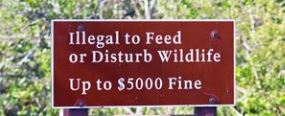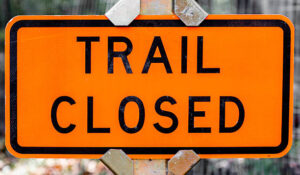
An Intro to Canada’s National Parks
If you’ve never gone into a national park you might not be familiar with certain park etiquette or how they differ from your average campground. No shame in that, but of course preparedness can help you avoid any surprises along the way when taking in the splendor of Canada’s natural world.
Everything boils down to Parks Canada, so if you want a more in-depth rundown on anything those government websites are your go-to for all up to date information! https://parks.canada.ca/ They are also on social media like Instagram which can help you stay informed.
Canada has 37 national parks and 10 national park reserves (the difference between these two being that reserves are subject to Indigenous land claims just so ya know; a lot of them offer awesome educational opportunities to immerse yourself in). We’ve got everything from historical sites to marine conservation areas, so no matter where you are there’s a little bit of natural splendor waiting for you from Nunavut to Ontario.
Getting There and Staying There:
Before heading out here are few things to be aware of: passes/permits, reservations for campgrounds and activities, and park rules.
Passes/Permits:
Parks Canada offers a variety of pass types to suit whatever your trip requires, including single location passes, daily passes, as well as the annual Discovery Pass which is great if you’re planning to hit multiple national parks in a year.
Campgrounds and Reservations:
A good number of campgrounds and parks in Canada require reservations in order for you to secure a spot, and while many are also first-come-first-serve, to avoid any lost time you’re able to either call the campground or reserve online! It is important to note that campground fees are not included in national park passes. You can usually begin booking for the next season in February.
It’s always a good rule of thumb to look up the campsite as well depending on how you want to spend your trip; Parks Canada has full, comprehensive lists for seasonal activities, different service level RV campgrounds, and even accessible camping options!
Many park activities will also offer pre-booking for your planning ease! You can find these on park websites for things like tours, skytrams, rafting and others.
Park Rules:
While every campground has its own set of rules, Parks Canada has ten “golden rules” for visitors to follow. Remember, the end goal of a national park is to protect it for future enjoyment and preservation of the environment.

1. Know Your Limits: While every national park is equipped with emergency response teams it’s always best to choose activities that match the skill of yourself and your party. Check trails online or on park maps to decide which ones suit you best!

2. Dispose of Garbage Properly: Canada Parks adheres to the principles of “Leave No Trace,” and this includes properly disposing of any garbage (this includes food, containers, and cigarette butts). You’ll find appropriate waste and recycle bins throughout the parks, and when you can’t find one be sure to keep anything with you until you return to your campsite. No matter how ‘biodegradable’ or ‘compostable’ an item may be, any littering is against the law – and also, it’s just rude. Don’t be a jerk.

3. Never Feed Wildlife: Similar rule to not feeding your pet from the table, but a bit more crucial. Human food and trash can actually cause a huge amount of damage to the ecosystem as well as put you and others in danger if the wrong critter comes too close to camp. (Also, it’s like, super illegal bro) Don’t assume your cooler or tent will keep Yogi out and take the proper precautions when storing food and trash.

4. Keep Your Pets on Leash at ALL Times: No matter how well trained your animal is, pets can still disturb wildlife – in many cases pets will actually attract certain wildlife to you! There are many pet friendly spaces and campsites in national parks where you and your fluffy friend can happily interact with others, but remember that it is the law to have your pet on leash.

5. Leave Wildlife Alone: We’ve all seen at least one video in our lifetime of some dumb human getting a little too close to the local wildlife and paying the price. Whether it’s a seal dragging a child into the water, or a moose headbutting a kid off a path (lots of these videos involve children who don’t know any better, which somehow makes it worse) wild animals are not playthings for humanity, and a moose can and will absolutely wreck you given the opportunity. Leave nature alone and don’t go viral for being dumb.

6. Avoid Excessive Noise: Most campgrounds will have specific quiet hours posted for you when you arrive, and in fact excessive noise is prohibited according to government regulations depending on the park. You can face eviction or other legal persecution such as a fine for improper behavior.

7. Use Designated Paths: Every park will have marked trails for you to follow of varying lengths and difficulties, as well as designated campsites. These are not a suggestion and it is not an invitation to go off path to try for a Darwin Award. Not only do the marked areas have facilities such as shelters and bathrooms, but going off path can cause damage to the environment and increase the risk of injury to yourself and others.

8. Take Nothing With You: Foraging and collection is illegal within national parks, that means no vegetation experimentation or a spare antler for your art project. Not only is it illegal and can disturb the park but in some cases can get you hurt (I’m serious about moose, don’t do it, just don’t). Take nothing but pictures! On that note, all Parks Canada places are drone free unless you have a permit or special permission. And I’m not just saying they’ll take away your toy, oh no, they can fine you up to $25,000. So leave it at home.

9. Drive With Caution: Now this should go without saying, but go the posted speed limit and drive appropriately for the road conditions presented to you. Highways and roads that go through the parks can and will be inundated with animals and the occasional child or pet.

10. Stay Out of Restricted Areas: Depending on trail conditions, weather, or even to reduce human activity, certain areas will be closed to the public from time to time. These closures will be posted for you to see and should be followed for public safety.
And look, sometimes things will be out of your control – that happens, but just do your best to respect others and the parks when you visit. The endgame is for everyone to enjoy the parks and all they have to offer. Use your common sense and have fun!
